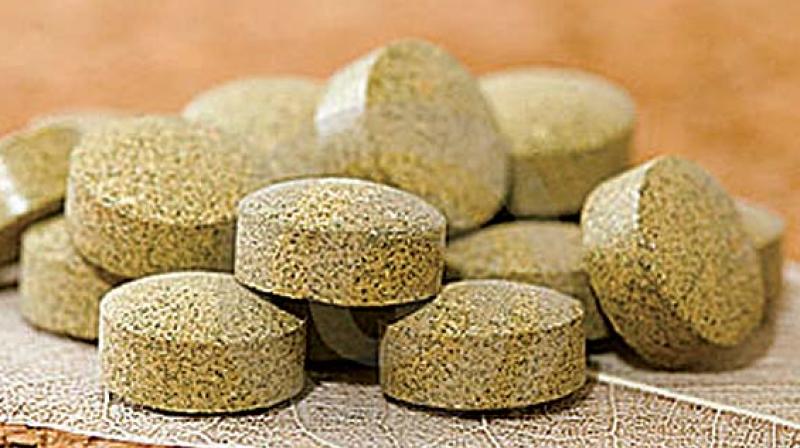Doctors now rely on a combination of allopathic and Ayurvedic drugs

Hyderabad: After scoffing at traditional and non-allopathic medicines and supplements — many of them plant-based — for long, allopathic doctors are beginning to rely on them to improve treatment of their patients. Common ailments for which allopathic doctors prescribe Ayurvedic medicines are liver disorders, arthritis, cough and cold, kidney stones and piles.
Dr Sai Kumar K., national president of the Doctor of Phar-macy Association, said, “Crosspathy is being practised in India where allopathic doctors prescribe homoe-opathy and Ayurvedic medicines along with allopathy medicines. It is a very common practice these days. But it is done for selective diseases. Commonly prescribed Ayurvedic medicines are Cystone, Liv 52, Shtavari, Bonnisan liquid and Septilin.”
From avocado soybean and curcumin for osteoarthritis to the ayurvedic kshar-sutra technique for fistula and papaya for external ulcers, allopathy is finding that it can use plant-based medicines, non-allopathic techni-que to alleviate the suffering of their patients. Some of these medicines are being manufactured by well-known pharma companies too.
Even for treatment of chronic diseases, many allopathic doctors are including acupuncture, meditation and yoga as part of their larger, integrative approach to health.
Allopathic medicine is preferred in the treatment of trauma and emergencies, while alternative medicine systems are used as support systems.
Dr Siddipet Ramesh from Gandhi Hospital said, “We are using alternative medicines for a few diseases. For fistula, we are using the ayurvedic kshar-sutra. If we perform surgery the recurrence rate is more then 30 per cent. Though kshar-sutra takes time but it is effective. We have combined allopathic and non-allopathic treatments: We anaesthetise the affected area and then apply kshar-sutra.” The Ayurvedic parasurgical technique is said to have been first descr-ibed by Sushruta.
Dr Sudharshan Reddy, a general physician, said, “Around 10 per cent of doctors are using non-allopathic medicines in the combination with allopathic drugs.
He said combined therapies like yoga, meditation and nutrition supplements were being used to help treat diabetes and thyroid issues.
He said there was little scientific evidence to prove to show that these alternatives work, but feedback from patients was positive.
Dr Rahul Agarwal said, “I don’t think the use of different methods of treatment is new. There are two types of therapies; one is complementary medicine which means alternatives are used along with mainstream medicines or the two are used alternatively; otherwise alternative treatments are used on their own, without mainstream medicines. Complementary medicine has been part of allopathic practice for a very long time. The best examples are malaria drugs such as quinine, chloroquine, morphine, artemisinin and derivatives which come from plant sources.”
“Allopathic medicines are evidence-based, that come into the market only after having undergone tests and clinical trials at different stages. Alternative methods of treatment like acupressure, yoga therapy, aromatherapy, ayurvedic medications, homoeopathy, current therapy, heat therapy are also known as holistic therapies,” Dr Agarwal said.
He said it was difficult to know whether these work, as they are often used alongside the allopathic medicines.
The alternative medicines
Bile acid extract: Liver disease
Primerose oil: Breast tenderness Ispaghula husk
Powder: Constipation
Papaya: External ulcers
Avocado Soybean, curcumin: Osteoarthritis, cardiovascular and kidney diseases
Supplements
Fish oil to lower triglyceride levels
Probiotics to prevent diarrhoea, gas, cramping caused by antibiotics.
Garlic extract for decreasing cholesterol
Cranberry juice supplements for urinary tract infections
Treatments
Diabetes: Lifestyle therapy, yoga, meditation, encouraging patients to think positive, diet.
Asthma: Pranayam, Yoga.
Severe low backache: Pain relief therapy, physiotherapy, acupuncture (if avoiding operation)
Chronic ailments: Homoeopathy Asthma and chronic obstructive pulmonary disease: Along with medication, yoga, pranayam, breathing exercises
Gastritis, jaundice: Ayurveda which focuses on diet, and herbal
medicine.

